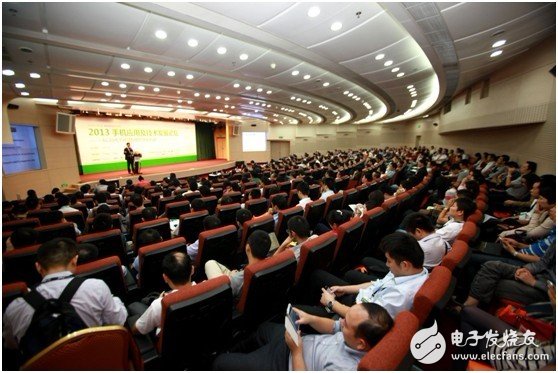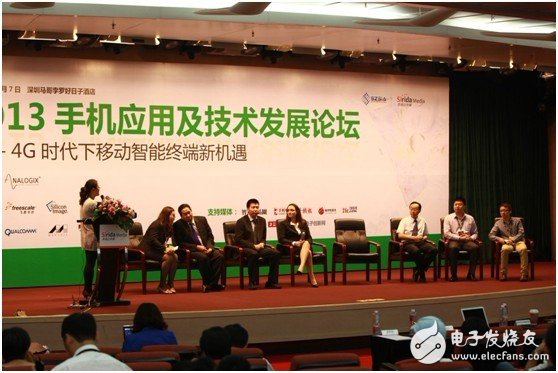2013 Mobile Application and Technology Development Forum: All parties in the industry gathered to talk about 4G
According to data released by the Global Mobile Equipment Suppliers Association (GSA) in October, 222 commercial LTE networks have been deployed in 83 countries around the world, and it is expected to increase to 260 by the end of the year. The number of LTE users has exceeded 100 million. As far as the Chinese market is concerned, the deployment of LTE is also in full swing. The Ministry of Industry and Information Technology has confirmed that it will issue 4G licenses this year, which indicates that we will soon usher in the 4G era.
Faced with this trend, how should domestic mobile phone manufacturers prepare for the LTE era, seize market opportunities and achieve breakthroughs in the fierce competition? In order to provide new ideas for mobile phone terminal manufacturers and solution providers to integrate into the LTE era, on November 7, 2013, the "2013 Mobile Application and Technology Development Forum" hosted by Shenzhen Semiconductor Association and undertaken by Sida Media was held in Marco Polo, Shenzhen. The good day hotel was grandly held. The forum invited Qualcomm, Marvell, Lianxin Technology, Freescale, Silicon Valley Digital, Silicon Image, Jichuang North and Baidu and other heavyweight companies as speakers, attracting more than 500 well-known mobile phones from China Terminal manufacturers, solution manufacturers and audiences on the upstream and downstream of the industry chain have carried out in-depth exchanges and discussions around the theme of "new opportunities for mobile intelligent terminals in the 4G era" from main control to peripherals, technology to applications.

Shen Lei, senior product marketing manager of Qualcomm, the global mobile phone processor dominator, first analyzed the opportunities and challenges of the LTE era for everyone. He pointed out that LTE is a dynamic ecosystem, but the design of LTE chips also faces many difficulties, especially many The challenge of multi-mode and multi-frequency. Qualcomm's advantage is that it hides complex technologies under the most seamless mobile connection, and brings the industry a solution that enables all levels of smartphones to support multi-mode LTE. Cao Jiankai, senior marketing manager of LTE product line from Lianxin Technology, pointed out that LTE has the advantages of high bandwidth, low latency, and real-time business always online compared to 2G and 3G. Its development will definitely promote the further integration of the industry and accelerate the interconnection of everything With the arrival of a new era, Lianxin Technology has created a high-performance LTE four-touch baseband chip LC1761 to promote the development of the domestic LTE industry. "According to our expectations, China's 4G license will be issued on December 8, at the latest no later than December 18," Cao Jiankai revealed. Regarding the background of state-owned assets behind Lianxin Technology, his statement should be highly credible. In addition to Qualcomm and Lianxin Technology, Marvell also brought 4G chips, the industry's first quad-core LTE single-chip solution, and products based on this solution have been launched one after another. The company's mobile product director Zhang Lu said that from the statistics of the number of global LTE users this year, South Korea, the United States, and Japan are far ahead, but in the next few years, the number of Chinese users will quickly exceed 40%, becoming the world's first . In the future, Marvell will launch more high-performance and highly integrated products to help the mature development of the TD-LTE industry.
The performance of smart phones is becoming more and more powerful, and the applications are becoming more and more abundant. It has become not only a communication tool, but also a personal entertainment computing center. However, due to the limitations of mobile phones with small screens, high-definition graphics and video effects cannot be displayed. Multi-screen sharing technology expands the content of mobile phones to display on a larger screen through wired or wireless methods, which solves the above problems well. Li Xiudong, China manager of Silicon Valley Digital Analog Semiconductor, pointed out that the use of wireless has many deficiencies such as need for pairing, limited bandwidth, need for compression and decompression, time delay and distortion, but there is no such problem with wired transmission. For example, SlimPort technology of Silicon Valley Digital Analog can help achieve high-speed, high-resolution connection between the phone and any screen, and easily expand the phone to a personal mobile PC. Li Xiudong believes that the demand for mobile phones as a personal mobile technology center is huge. In the future, wired high-definition interface technology is likely to be integrated into the main control and become the standard of mobile phones. In addition, Silicon Image, which also provides high-definition connectivity solutions for mobile products and the PC market, has brought three high-definition connectivity technologies, HDMI, MHL, and WirelessHD. The company's marketing department customer experience director Wang Guitian introduced that HDMI has become one of the main high-definition connection standards, and MHL technology has also been adopted by many mobile devices in mobile devices, and the application has also been extended to car equipment, TV player sticks, projectors, etc. field.
How to achieve product differentiation is a problem that system manufacturers are constantly exploring. Sun Song, product application manager of Freescale Asia Pacific, said that integrating smart sensors can bring a smarter user experience to mobile phones and is an important means to achieve product differentiation. At this forum, Freescale has brought you many excellent MEMS sensor solutions, and also launched new solutions for popular wearable device / pedometer applications. Like the sensor, the touch screen is also an important interface for human-computer interaction, and it can even be said to be the first interface. The quality of the touch screen experience also determines the quality of the mobile phone to give users the first feeling. Chen Kui, vice president of Jichuang North Technology, believes that the touch screen as the first interface of human-computer interaction needs a perfect touch feeling to be enough to match the high-speed data transmission experience brought by the LTE era. The combination of display and touch Incell / Oncell is undoubtedly the future development trend, and new materials and technologies such as Out cell, carbon nanotubes and graphene are also worth looking forward to.
Qu Bo, a senior product manager from Baidu, said that users will definitely look at the UI first when they get a mobile phone, and only a beautiful interface can attract users. The Baidu Cloud ROM launched by the company has a cool UI and a new optimized functional experience, combined with seamlessly integrated cloud capabilities, it will bring a perfect user experience to mobile phones. Li Wenjuan, a senior market analyst at Shenzhen Sida Media, analyzed in depth the opportunities and industries brought by the LTE era from three dimensions: LTE network and operator development strategies, mobile phone industry chain LTE preparation status and the transformation of new applications in the 4G era. Challenges, she believes that the pattern of chip manufacturers in the 4G era will be reshuffled, LTE will be the standard for high-end mobile phones in 2014; 4G will also shorten the distance between cloud services and personal terminals, wearable products, security monitoring, mobile video, telemedicine It is a point of development opportunity.

At the final peak dialogue session of the forum, the speakers and live audience had a lively discussion on what innovative applications will emerge in the 4G era, mobile phone security issues in the 4G era, how to develop peripheral devices, and other issues. This session of the Mobile Phone Application and Technology Development Forum The curtain came to a successful conclusion in the unspoken conversation that everyone had never intended.
Brushless DC Electric Motors are DC motors that use magnets instead of brushes and a commutator for commutation. The benefit to that is they don`t suffer from brush wear, but the drawback is that they need electronic current-phase commutation.
Brushless DC Electric Motors work like shunt-wound motors, but field flux comes from magnets instead of current through a winding. The permanent magnets are made of rare-earth elements such as high-energy neodymium that generate a magnetic field.
Brushless DC Electric Motor,Brushless dc gear motor,Brushless gear motor,Brushless planetary gear motor,Brushless dc motor with gearbox,Brushless dc motor with planetary gearbox
Shenzhen Maintex Intelligent Control Co., Ltd. , https://www.maintexmotor.com